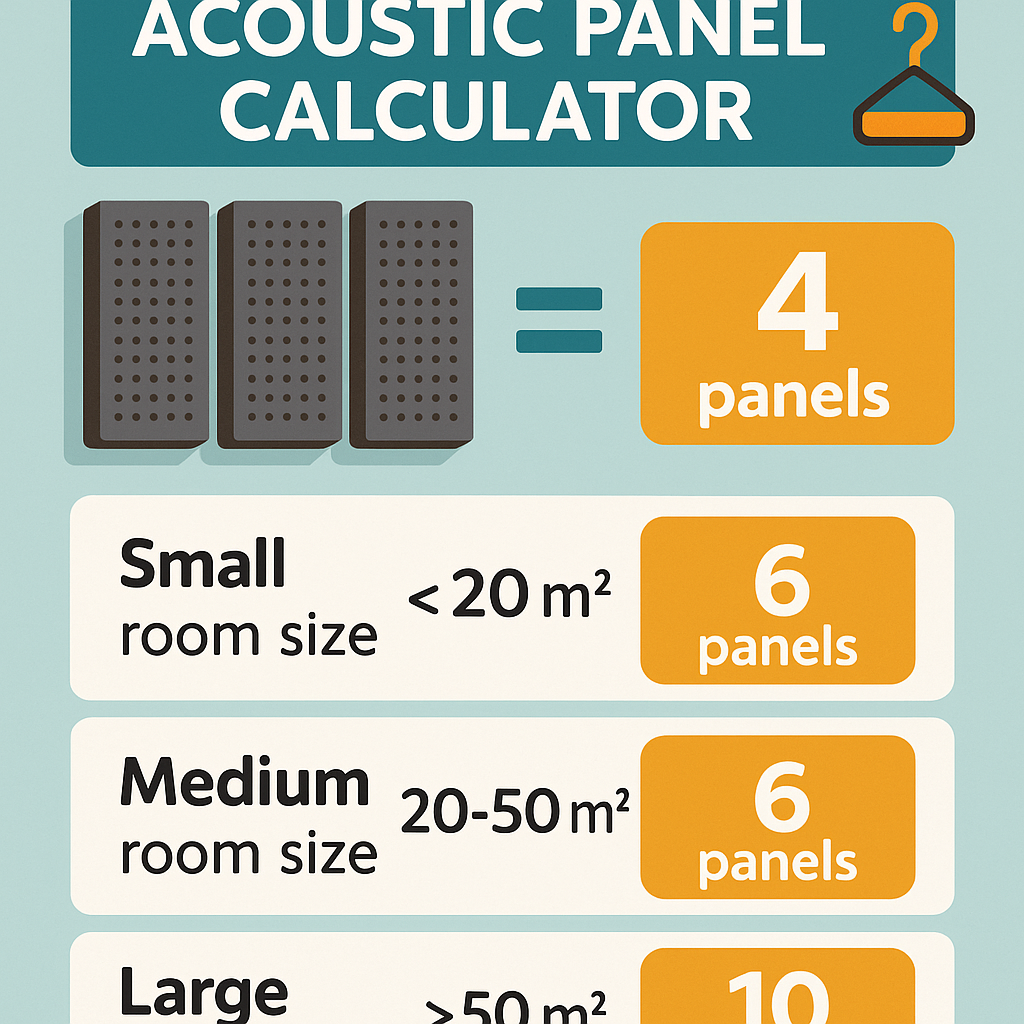Free Acoustic Panel Calculator Online
Acoustic panels are one of the most effective tools in controlling sound quality inside any space. Whether you’re trying to reduce unwanted noise, eliminate echo, or enhance audio clarity in a room, acoustic treatment plays a major role. But knowing how many panels you need, what type works best, and how to install them can be a challenge. That’s where the acoustic panel calculator comes in. Tools like Construction Calculators help you determine the correct quantity of panels based on your room’s dimensions, wall surfaces, and sound absorption goals.
Acoustic Panel Calculator
What Is an Acoustic Panel Calculator?
An acoustic panel calculator is a digital tool that takes input from your room dimensions, ceiling height, material types, and intended sound treatment level to calculate how many panels you’ll need. Whether you’re treating a small home office or a large auditorium, it simplifies the guesswork. It uses a simple formula that considers reverberation, echo, wall surface, and overall acoustics. Some calculators even include advanced settings for custom room shapes, wall panel material selection, and ceiling features.

Understanding Reverberation and Echo
Reverberation is the persistence of sound in a room after the original sound is produced. Echo is the reflection of sound waves that arrive at the listener’s ears after a short delay. Both reduce the quality of speech and audio in a space. An untreated wall, ceiling, or large open room can amplify echo and reverberation. By calculating and applying the right acoustic panels, you reduce these effects and improve clarity. The calculator measures the needed sound absorption materials to bring your room into balance.
To estimate how much absorption is needed, we use: $$A=0.161×VTA = 0.161 \times \frac{V}{T}A=0.161×TV$$
Where:
- AAA = Total absorption needed (in sabins)
- VVV = Room volume (in cubic meters)
- TTT = Target reverberation time (in seconds)
Acoustic Panel Materials and Designs
Choosing the right material is crucial. Panels made with wood veneer provide a natural aesthetic while still absorbing sound waves. Acoustic slat wall designs offer both function and style, making them ideal for office spaces and commercial interiors. For deeper soundproofing, bass traps are used in room corners to absorb low-frequency sounds. Acoustic art products like fade-resistant prints serve both decorative and functional purposes. These products come in various colors, shapes, and designs, making them easy to match with your décor while handling excess echo.
What Inputs Does the Calculator Require?
For most acoustic panel calculators, you’ll need to provide:
- Room dimensions (length, width, and height)
- Wall and ceiling materials (wood veneer, fabric, drywall, etc.)
- Surface area of untreated wall panels
- Target sound absorption level
- Type of acoustic panels planned (fabric, wood, art panels, bass traps)
Use this to determine wall area: $$[
\text{Wall Area} = 2 \times (\text{Room Length} \times \text{Room Height}) + 2 \times (\text{Room Width} \times \text{Room Height})
]$$
And room volume for reverb impact: $$Room Volume=Room Length×Room Width×Room Height\text{Room Volume} = \text{Room Length} \times \text{Room Width} \times \text{Room Height}Room Volume=Room Length×Room Width×Room Height$$
How to Calculate Panel Quantity
Once the total absorption AAA is known, calculate how much one panel absorbs using: Absorption per Absorption per Panel=$$α×Panel Area$$
Where:
- $$α\alphaα = NRC (Noise Reduction Coefficient)$$
- $$Panel Area = width × height of one panel$$
Then find total panels needed: $$Number of Panels=α×Panel AreaA$$
This gives a precise, calculated quantity of panels to be installed.
Matching Panels to Design Goals
Your space doesn’t have to sacrifice design for function. With unlimited design potential, panels now come in a variety of colors, textures, and materials. Want a sleek wood look? Choose from aku woodpanel collections. Want vivid wall art? Select from acousticart panels with fade-resistant prints. Some providers even let you upload your own custom images for a personalized touch. Whether you’re working with a rustic office or a modern home theater, you’ll find a panel that matches.
Conclusion: Plan Smarter with the Acoustic Panel Calculator
Acoustic panel calculators are essential tools for anyone serious about sound control. Whether you’re improving the acoustics in a small home office or treating a large commercial space, these calculators eliminate guesswork and provide data-driven guidance. With just a few key inputs like room dimensions, wall surfaces, and noise level, you can calculate the correct quantity and type of acoustic panels needed to reduce reverberation, manage echo, and improve overall acoustics. Tools like the General Construction Calculators, Tank Volume Calculator, and Stair Calculator support accurate planning for sound-treated environments.
